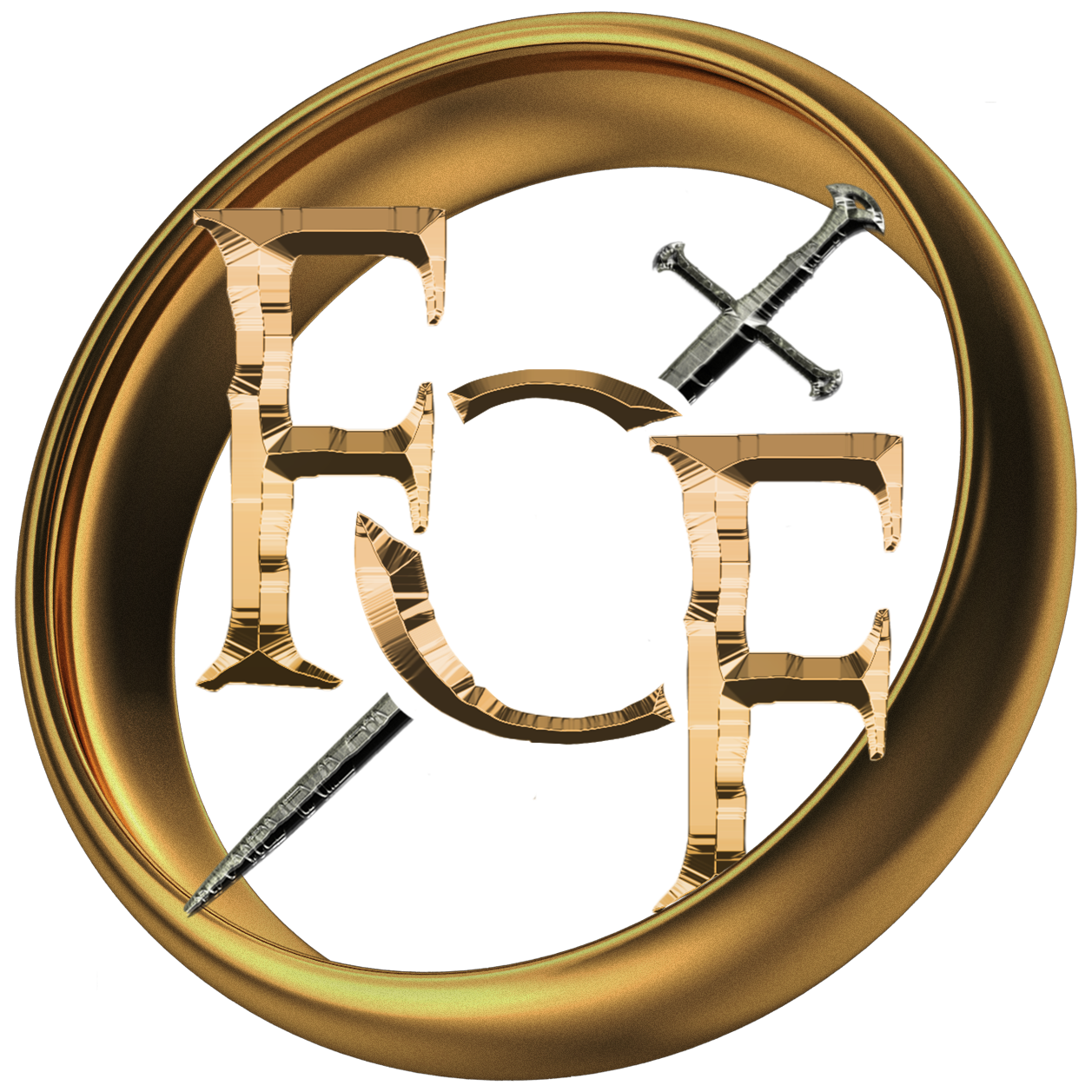
Tolkien on Adaptations
“The canons of narrative in any medium cannot be wholly different; and the failure of poor films is often precisely in exaggeration, and in the intrusion of unwarranted matter owing to not perceiving where the core of the original lies.”
—J.R.R. Tolkien
From September 6th to 9th, 1957, the 15th World Science Fiction Convention was held in London, the first time “Worldcon” had been held outside of North America. At the close of the convention (later dubbed “Loncon 1”), J.R.R. Tolkien was announced as the winner of the International Fantasy Award (a British award comparable to the Hugo Award) and presented with “an absurd ‘trophy'” consisting of a metal rocket and a cigarette lighter attached to a round base. Although Tolkien seems to have appreciated the recognition and the speeches, he had no use for the trophy and disposed of it expeditiously.
There had been another promising development from the convention, though. Even before Tolkien was announced as the winner of the International Fantasy Award, an American science fiction writer, magazine editor, and literary agent named Forrest J. Ackerman had paid him a visit at his home, taking a taxi all the way from London to Headington, Oxford. Ackerman came with a proposal to make a motion picture out of The Lord of the Rings. With his proposal he brought concept art, location photographs, and a “story line” or treatment of the proposed film, written by Morton Grady Zimmerman. Tolkien was impressed by the concept art, calling it “astonishingly good” and reminiscent of “Rackham rather than Disney”. He also described the location photographs, which were of mountain and desert landscapes in North America, as “remarkable”. He was less complimentary of the film treatment, however. Simply put, it was “bad”. Despite his distate for the story line as it had been presented to him, Tolkien did not immediately dismiss the project. He contacted his publisher, telling him that he was open to working with Ackerman and company as long as they were “open to advice”. Together, Tolkien and his publisher formulated a policy of “Art or Cash”: either Tolkien would get an absolute veto on anything he found objectionable in the film, or he would get paid very handsomely in return for relinquishing his right of veto.
Tolkien was not entirely new to adaptations of his works in other media. In 1955 and 1956 he had been involved in an adaptation of The Lord of the Rings into a 12-episode radio series for the BBC. Even earlier, in 1954, his poem The Homecoming of Beorhtnoth, Beorhthelm’s Son had been adapted into a half-hour BBC radio play. Not much is known about Tolkien’s response to the latter. He is known to have been annoyed by the adaptation of The Lord of the Rings, however, due to the BBC’s decison to condense the latter two-thirds of the story into a shorter overall air time than had been granted for the first third. The radio dramas were fairly simple to produce, however, and could make good use of Tolkien’s talents as a writer. In a film or television adaptation, on the other hand, Tolkien’s role would necessarily be smaller. Nevertheless, Tolkien was long enthusiastic about the idea. Even before Ackerman’s proposal, Tolkien had received an inquiry from an American animator regarding the possibility of turning The Lord of the Rings into an animated film. Tolkien informed his publisher: “As far as I am concerned personally, I should welcome the idea of an animated motion picture, …and that quite apart from the glint of money.” Although he recognized the “risk of vulgarization” such an animated film would bring, he thought it could be hardly worse than the “sillification achieved by the B.B.C.”
All Adaptations are Bad Adaptations
There is a purist view that any film or television adaptation of Tolkien’s works is, either intrinsically or for practical purposes, inferior to his own written works, if not an affront to them. This view does not spare Peter Jackson from criticism, either, but may grant that his adaptation of The Lord of the Rings is the best among the bad. I do not necessarily agree with this view, nor do I think J.R.R. Tolkien would. Which is not to say that I find it useless. A variant of this view may be stated as: there is no adaptation that Tolkien would be satisfied with, or conversely, any adaptation that would satisfy J.R.R. Tolkien would have limited appeal. I’m not sure I agree with this statement either. Tolkien managed to produce a written work that has seemingly satisfied millions, so I think perhaps his instinct for storytelling, even in a visual medium, should not be underestimated. That said, I do think it is helpful to remember that Tolkien would not be easily satisfied.
Unfortunately we do not have J.R.R. Tolkien’s comments on any of the New Line Cinema films, or any of the upcoming projects based on his works, such as Amazon Studios’ The Rings of Power and New Line Cinema’s The War of the Rohirrim. However, we do have Tolkien’s comments on Zimmerman’s film treatment, so what we can do is compare and extrapolate.
Tolkien’s Criticisms
Some changes are necessary when adapting a written work to a visual medium, simply due to the differences between the media. When adapting a work of prose fiction to film or television, narration must be used sparingly, for the most part replaced by dialogue, action, and so on. Often this means inventing dialogue where the original work glossed over it. In other cases long stretches of dialogue must be pared down to allow the plot to continue moving along. Many actors and extras must be hired and costumed (or characters drawn and animated) to populate scenes, even if they were never specifically mentioned in the text of the original work. Long descriptions of scenery in prose can be dropped for comparatively brief establishing shots on film. Tolkien was not unaware of all this, and even gave some thought of his own to the idea of how to adapt his works to film or television. He did, however, have strong opinions of certain things that should or shouldn’t be done when adapting his works (primarily The Lord of the Rings), and I think it is worthwhile for anyone adapting his works to give them serious consideration.
Abridgment vs. Compression
One of Tolkien’s first criticisms of Zimmerman’s film treatment concerned the manner in which it edited his story down:
An abridgement by selection with some good picture-work would be pleasant, & perhaps worth a good deal in publicity; but the present script is rather a compression with resultant over-crowding and confusion, blurring of climaxes, and general degradation: a pull-back towards more conventional ‘fairy-stories’.
An abridgment removes scenes considered unnecessary in order to follow the main plot of the story. A compression tries to avoid removing scenes by squashing them together. The result is a frenetic pacing and/or a confusion of events that would otherwise make more sense. Tolkien was well aware of the need to remove scenes from his story in order to produce a film of a reasonable length, and preferred that to confusing events that were separate in his written work.
Care and Respect
Although not a specific criticism of the film treatment itself, Tolkien got the impression that Zimmerman had not actually read his book, but had rather only skimmed it, referring to him as “hasty, insensitive, and impertinent”. Whether or not this is a fair criticism of Zimmerman, it shows the importance (to Tolkien) of carefulness, as well of respect for his own storytelling decisions:
I feel very unhappy about the extreme silliness and incompetence of Z and his complete lack of respect for the original (it seems willfully wrong without discernible technical reasons at nearly every point).
It seems Tolkien would not be in favor of change for the sake of change, though he could be persuaded that a change was necessary if there was a technical reason for it.
Names
Naming things is hard, whether in computer science or in any other field. Tolkien was, of course, well aware of this fact, but he also went to a great deal of trouble coming up with names for his characters and locations, and also coming up with reasonable meanings for those names. So naturally he was incensed when those who sought to adapt his work failed to exercise similar care. He was annoyed that Zimmerman consistently misspelled “Boromir” as “Borimor”, and even moreso that he named a Great Eagle Radagast, which is not the name of a Great Eagle, but rather of a wizard. This may seem a small detail, but for someone who was immersed in the logic of his own Secondary World, it was immersion-breaking, as if someone had named an Arthurian knight “Sir Eleanor” without explanation. Or, dare I say it?: as if someone had named a horse “Brego”.
Magic
For a “fantasy” author, Tolkien makes fairly sparing use of magic, keeping its use fairly subtle. He was annoyed by what he called “intrusions” of fantastic elements into his story, such as incantations, blue lights, Eagles offering frequent passenger flights, and “the floating body of Faramir”.
Fights
Tolkien wrote about various fights in The Lord of the Rings, but he was open to cutting out most of them, including even the “defence of the Hornburg”, and leaving in only the vital Battle of the Pelennor Fields. He disliked Zimmerman’s “preference for fights”, and probably would have been irritated by the amount of time devoted to battles in New Line Cinema’s The Two Towers.
Anticipation vs. Surprise
Another element of Zimmerman’s treatment that annoyed Tolkien was his frequent moving of story elements to a place earlier in the script, thus ruining any surprise they might have provided upon their appearance later in the story. The Eagles, for example, show up before Gandalf’s rescue from Orthanc. Tolkien argued that this tendency resulted in “flattening the tale out”.
Characterization
Tolkien objected to Gandalf spluttering, and felt it was a mischaracterization. He wrote that Gandalf has a sense of humor, but that he also has great dignity. Overall he preferred characters to be cut rather than changed or merged, although with a character as important as Gandalf, cutting him would likely be out of the question.
Anachronisms
Tolkien objected to things he saw as anachronisms in Zimmerman’s treatment, such as Barliman Butterbur requiring Frodo to “register” when he stays at the Prancing Pony, or Meduseld containing glass windows:
If details are to be added to an already crowded picture, they should at least fit the world described.
The Point
Tolkien saw the Zimmerman treatment as careless, and “with no evident signs of any appreciation of what it is all about.”
Application
Some of Tolkien’s criticisms prefigure changes Peter Jackson and company made in their adaptations: naming, a preference for fights, characterization, and so on. Others look like they may well apply to Amazon Studios’ Rings of Power series, particularly compression, naming, and characterization. As we learn more about The Rings of Power, we will have a clearer picture of how well it fares as a Tolkien adaptation, but just going by Tolkien’s list of concerns, it does seem likely that the “perfect” faithful Tolkien adaptation is still just a dream.
Sources
The primary source material for this post is The Letters of J.R.R. Tolkien. The following letters are used:
Letter 198 to Rayner Unwin
Letter 201 to Rayner Unwin
Letter 202 to Christopher and Faith Tolkien
Letter 207 to Rayner Unwin
Letter 210 to Forrest J. Ackerman




No Comments